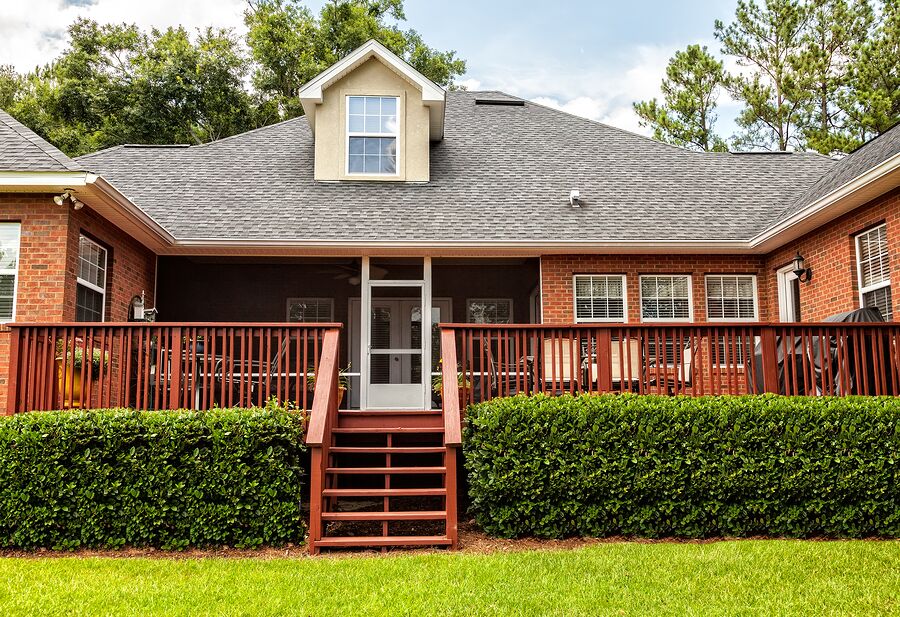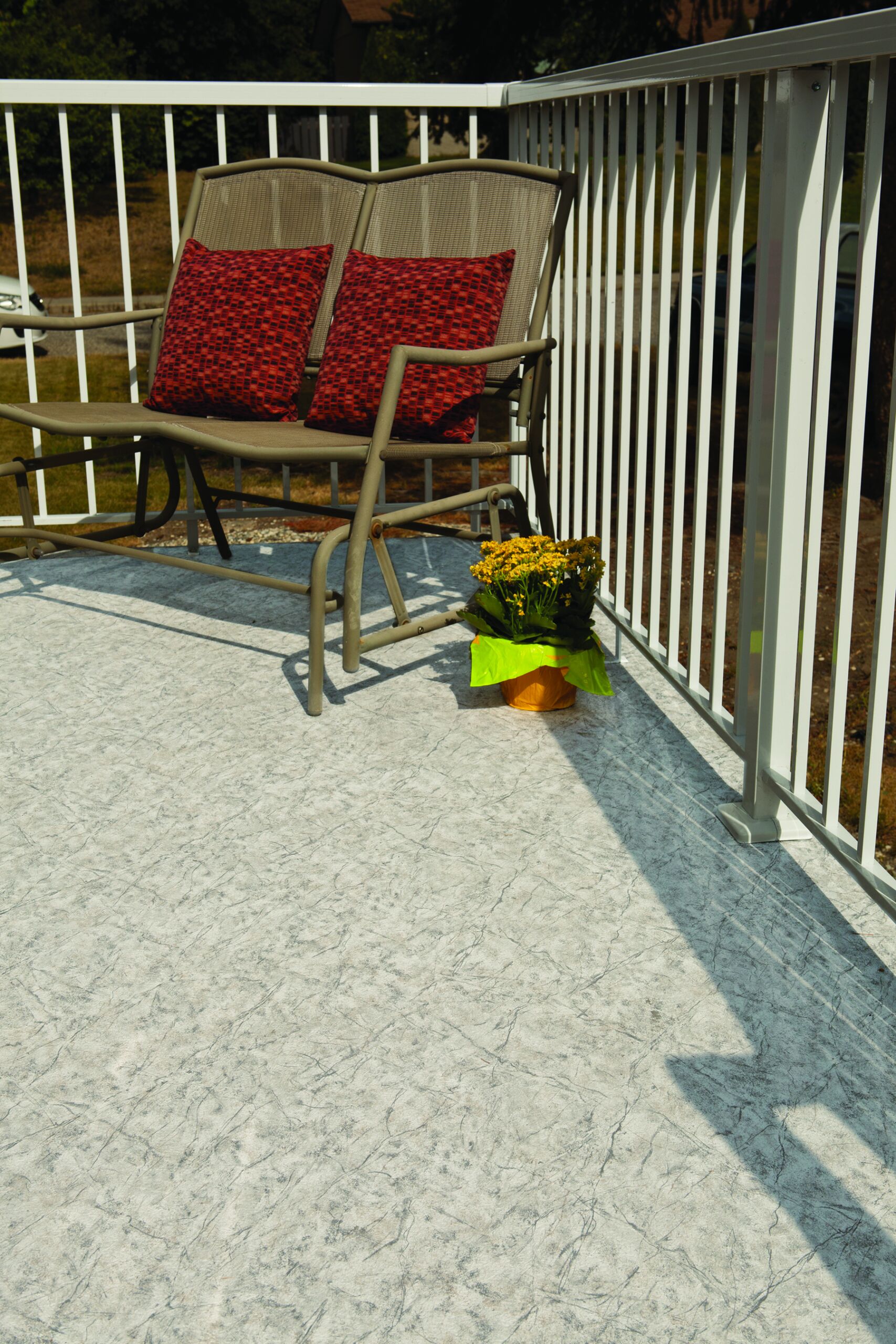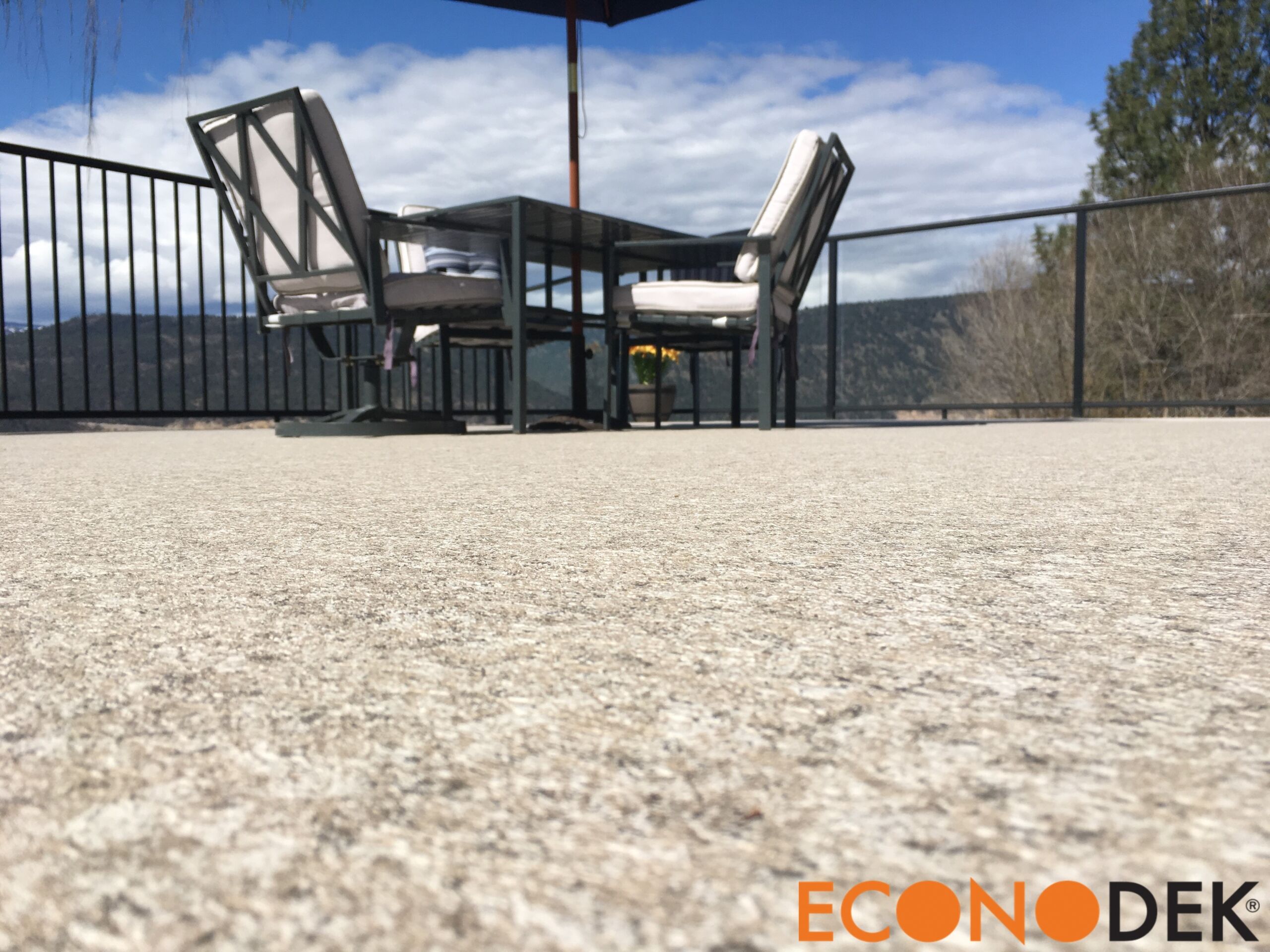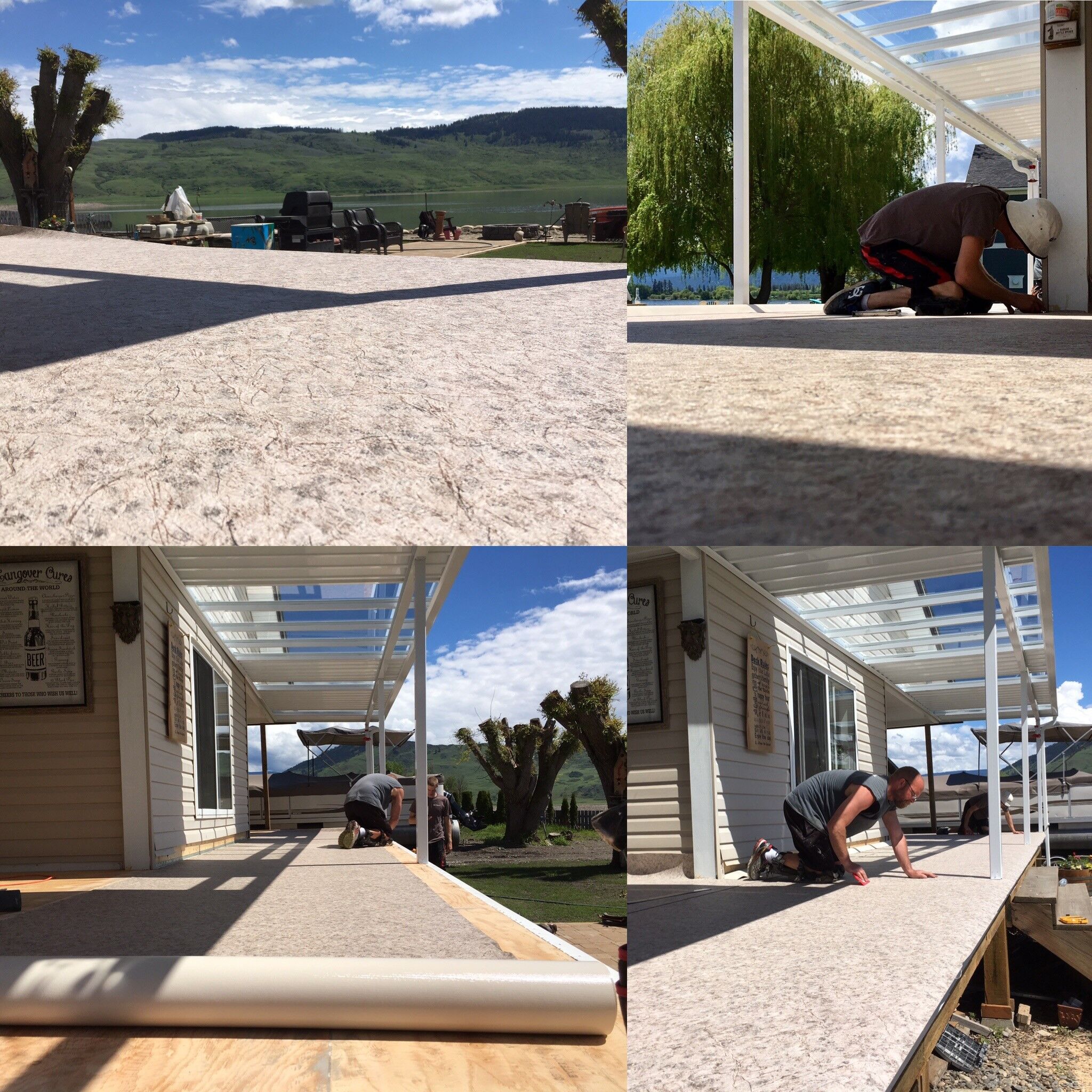Vinyl Deck Safety Month – Protect Your Deck
The North American Deck and Railing Association (NADRA) declares each May deck safety month and Econodek wants to help you ensure your vinyl deck safety, so we’ve pulled together some things to look for. You can also download NADRA’s checklist for more tips.
Look for Wet Wood Under Your Vinyl Deck
Any issue with wood can be a warning sign that there might be a safety issue with your deck. The wood is the skeleton of your deck, if it’s rotted, soft, or splintered you’ll likely need to take action. Whether it’s the deck surface (under your vinyl membrane), stairs, posts, or the ledger board (which attaches to the main structure of your home), damaged wood is unsafe and a major warning sign that needs to be heeded.
Vinyl Deck Safety Pro Tip: Use a sharp instrument (like a screwdriver) and “poke” problems spots. If you can penetrate the wood easily or lift off splinters you might need to replace that section of the deck’s wood.
Look at How Your Deck Is Constructed
What’s holding your deck together? Is it nails, screws, or something else? If your deck is more than ten years old you should check it over – if your deck uses screws you might need to make a few replacements. The last thing you want is for screws or nails to work themselves loose and result in unsafe wobbly railings, loose stairs, or worse, the separation of the deck from the building itself. For information see Econodek’s page entitled Tips on Building Your Deck.
Check Over the Deck Flashing
Even with a waterproof deck surface, you need something to bridge the gap between the decking and other objects – such as railings or your house. Vinyl deck safety also extends to your deck flashing. Flashing protects your deck and your home – so make sure your deck flashing is intact and functioning correctly.
What about the Deck Surface?
Whether you have a roof deck, a balcony, or a sundeck, the surface of your deck protects everything underneath. Wood decks can be maintained and protected by annual staining and sealing, while lower-maintenance decks are protected by the decking surface on top.
Regardless of the type of surface, for vinyl deck safety, your deck needs to be checked over at least annually to ensure that it’s still doing its job. Any signs of failure (peeling, cracking, bubbling, etc.) means that you need to consider replacing your deck surface. Otherwise, water could get under the surface and cause structural problems. If there’s any doubt, consider installing a new vinyl surface to protect your deck and keep it safe.
Many repairs to increase deck safety can be DIY deck repairs – but if there’s anything that concerns you, consider having a qualified contractor take a look. Remember that your vinyl deck safety is important since it keeps your family safe too.
If you still have questions about vinyl deck safety or resurfacing your deck, contact the vinyl decking experts at Econodek by email or call them toll free at 1-877-860-9333.
Happy Deck Safety Month!






